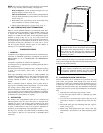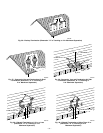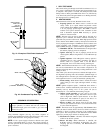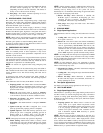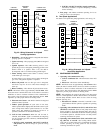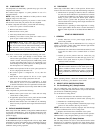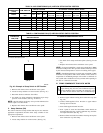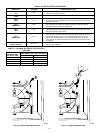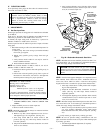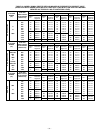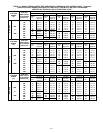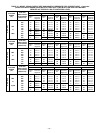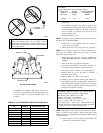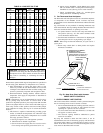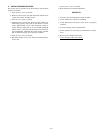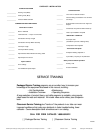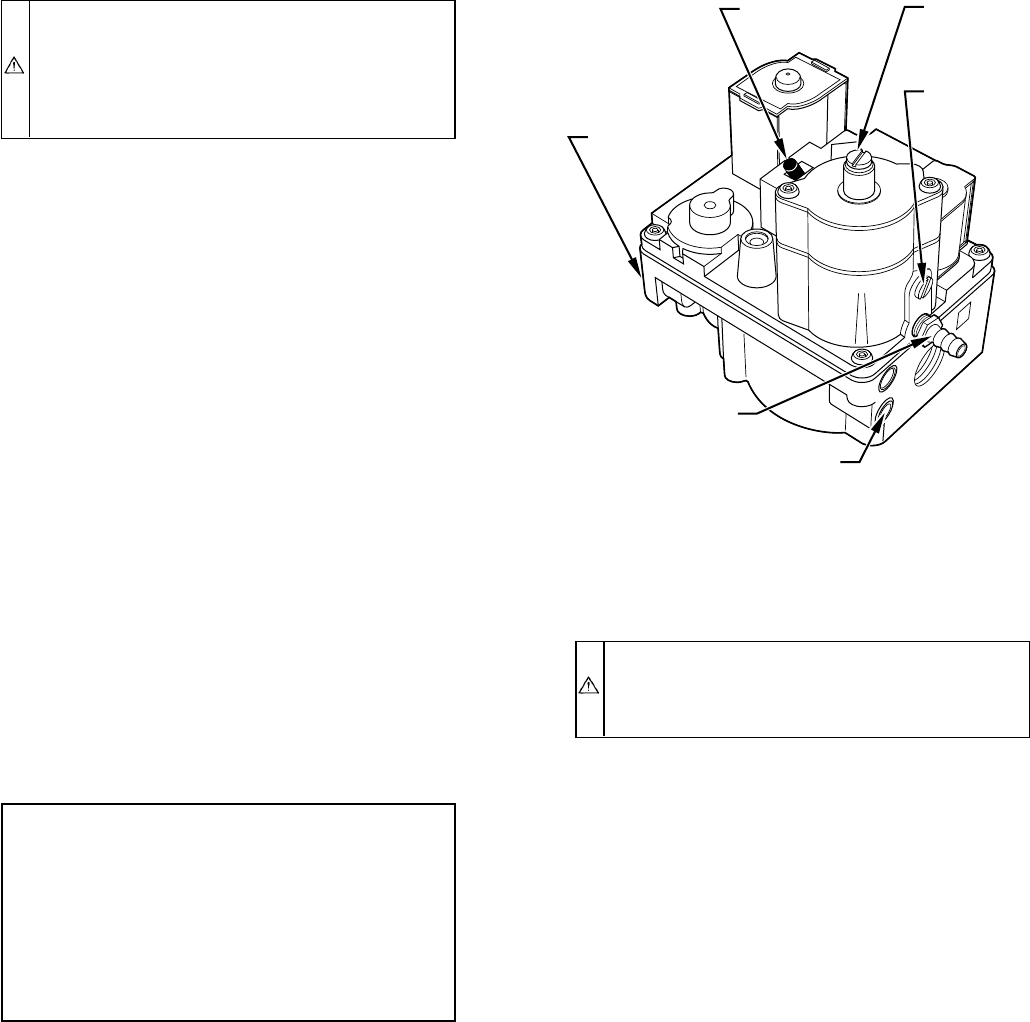
IV. PURGE GAS LINES
If not previously done, purge the lines after all connections have
been made and check for leaks.
WARNING: Never purge a gas line into a combustion
chamber. Never use matches, candles, flame, or other
sources of ignition for the purpose of checking leakage.
Use a soap-and-water solution to check for leakage.
Failure to follow this warning could result in fire,
explosion, personal injury, or death.
V. ADJUSTMENTS
A. Set Gas Input Rate
Furnace gas input rate on rating plate is for installations at altitudes
up to 2000 ft.
In the U.S.A., the input rating for altitudes above 2000 ft must be
reduced by 2 percent for each 1000 ft above sea level.
In Canada, the input rating must be derated by 5 percent for
altitudes of 2000 ft to 4500 ft above sea level.
Furnace input rate must be within ±2 percent of input on furnace
rating plate.
1. Determine natural gas orifice size and manifold pressure for
correct input.
a. Obtain yearly heat value average (at installed altitude)
from local gas supplier.
b. Obtain yearly specific gravity average from local gas
supplier.
c. Verify furnace model. Table 12 can only be used for
model 355MAV Furnaces.
d. Find installation altitude in Table 12.
NOTE: For Canada altitudes of 2000 to 4500 ft, use U.S.A.
altitudes of 2001 to 3000 ft in Table 12.
e. Find closest natural gas heat value and specific gravity in
Table 12.
f. Follow heat value and specific gravity lines to point of
intersection to find orifice size and low- and high-heat
manifold pressure settings for proper operation.
EXAMPLE: (0—2000 ft altitude)
Heating value = 1050 Btu/cu ft
Specific gravity = 0.62
Therefore: Orifice No. 45
Manifold pressure: 3.6-in. wc for high heat
1.5-in. wc for low heat
* Furnace is shipped with No. 45 orifices. In this example,
all main burner orifices are the correct size and do not need
to be changed to obtain proper input rate.
g. Check and verify burner orifice size in furnace. NEVER
ASSUME ORIFICE SIZE; ALWAYS CHECK AND
VERIFY.
2. Adjust manifold pressure to obtain input rate.
a. Remove burner enclosure front.
NOTE: Manifold pressure MUST always be measured with the
burner box cover REMOVED.
b. Remove caps that conceal adjustment screws for low-
and high-heat gas valve regulators. (See Fig. 48.)
c. Turn setup switch SW-2 on control center to ON
position. (See Fig. 25.) This keeps furnace locked in
low-heat operation.
d. Jumper R and W/W1 thermostat connections on control
center to start furnace.
e. Turn low-heat adjusting screw (5/64 hex Allen wrench)
counterclockwise (out) to decrease input rate or clock-
wise (in) to increase input rate.
NOTE: DO NOT set low-heat manifold pressure less than 1.3-in.
wc or more than 1.7-in. wc for natural gas. If manifold pressure is
outside this range, change main burner orifices.
CAUTION: DO NOT bottom out gas valve regulator
adjusting screw. This can result in unregulated manifold
pressure and result in excess overfire and heat exchanger
failures.
NOTE: If orifice hole appears damaged or it is suspected to have
been redrilled, check orifice hole with a numbered drill bit of
correct size. Never redrill an orifice. A burr-free and squarely
aligned orifice hole is essential for proper flame characteristics.
f. Turn setup switch SW-2 to OFF position after complet-
ing low-heat adjustment.
g. Jumper R and W2 thermostat connections on control
center. (See Fig. 25.) This keeps furnace locked in
high-heat operation.
h. Turn high-heat adjusting screw (5/64 hex Allen wrench)
counterclockwise (out) to decrease input rate or clock-
wise (in) to increase rate.
NOTE: DO NOT set high-heat manifold pressure less than 3.2-in.
wc or more than 3.8-in. wc for natural gas. If manifold pressure is
outside this range, change main burner orifices.
i. When correct input is obtained, replace caps that conceal
gas valve regulator adjustment screws. Main burner
flame should be clear blue, almost transparent. (See Fig.
49.)
3. Verify natural gas input rate by clocking gas meter.
NOTE: Be sure all pressure tubing, combustion-air and vent
pipes, and burner enclosure front are in place when checking input
by clocking gas meter.
a. Calculate high-altitude adjustment (if required).
UNITED STATES
Fig. 48—Redundant Automatic Gas Valve
A97386
ON/OFF
SWITCH
INLET
PRESSURE
TAP
ON
O
F
F
BURNER
ENCLOSURE
REFERENCE
PRESSURE TAP
MANIFOLD
PRESSURE
TAP
LOW-FIRE
ADJUSTMENT
ALLEN SCREW
(UNDER CAP)
HIGH-FIRE
ADJUSTMENT
ALLEN SCREW
(UNDER CAP)
—37—
→



